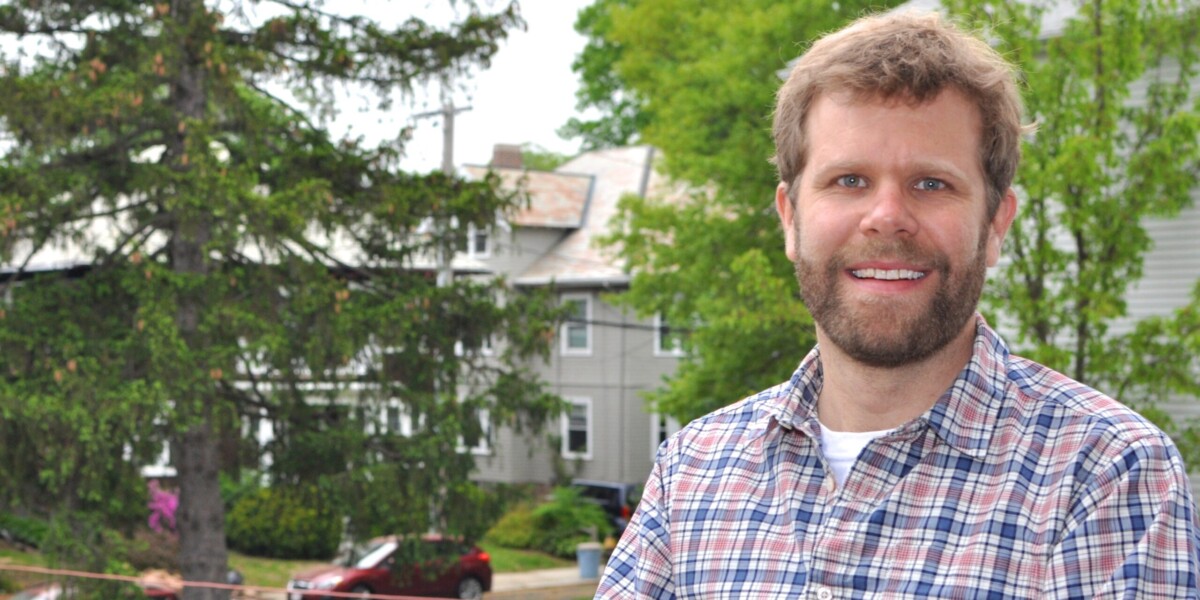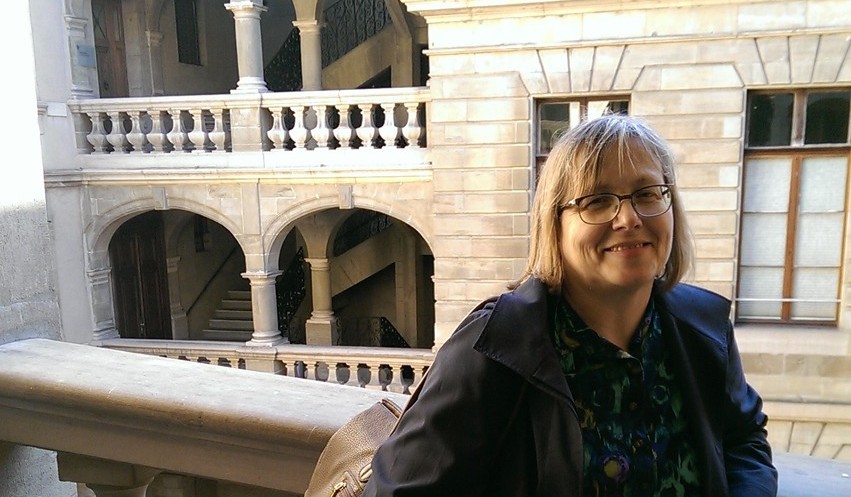Natalie Nazarian, a student in the UVM Post-Baccalaureate Premedical Program, graduated in 2014 from NYU’s Gallatin School, where she earned a Bachelor of Arts degree in an interdisciplinary program that combined science and studio art.
We talked to Nazarian about her holistic approach to medicine and how her mother’s illness changed the way she thinks about patient care.
You studied at NYU with plans to initially study human rights and literature. How did you ended up deciding to pursue a career in medicine?

Until college, I had never really been interested in science, and was more inclined toward art and literature. I’m also half Armenian and feel very connected to my family’s heritage as genocide survivors.
Learning about the genocide committed against the Armenian people made me initially want to study human rights in college, and combine it with my preexisting interests in literature and art. I still hope to find a way to carry the idea of fundamental human rights into the practice of medicine.
My courses in the humanities at NYU introduced me writing about science — all this poetic language about how the universe works — and I felt the need to understand what was behind it. I completed a minor in chemistry, and wanted to pin down the overlap between these different disciplines I’d been studying, and that’s how I found my way to Gallatin, where students design their own major, or “concentration.” I began to see medicine as the embodiment of the overlap between human rights, the arts, and science.
In the end, my undergraduate major was highly interdisciplinary, with an emphasis on studio art — drawing and sculpture in particular — and science, and how overlap between these disparate areas might reveal something about what it means to practice compassion as a physician. My concentration was officially titled “Compassionate Art, Compassionate Science: An Alternative Premedical Approach.”
My focus at Gallatin was, and continues to be at UVM, on how adopting a careful approach to learning can dictate the quality of the practical application of knowledge. What if we saw patients, illness, and injury as we might see a piece of art? How might that bring a sort of caution and respect to the practice of medicine, as well as the experience of the patient, that may be needed in the contemporary health care climate?
How did you mom’s illness affect your decision to study medicine?
When I was in high school back home in Minnesota, my mom, a radiologist, became very sick. No one understood what was happening, including her. She had an abdominal condition that was causing obstructions, and needed emergency surgeries. She then ended up diagnosed with an autoimmune condition.
After receiving a lot of treatment that was rather indiscriminately fighting her illness and often ended up exacerbating it, she eventually got care that was more targeted to where her real pain was, with minimal side effects. The improvement in her quality of life was based on the recognition in the complexity and sensitivity of her condition, which resulted in the ability to target what she needed most.
My mom’s expertise was always rooted in western biomedicine and seeing her find her way through this illness and become open to all different kinds of treatment methods really inspired me. It made me understand illness, particularly autoimmune disease, as this whole complex narrative and that when best understood and carefully targeted, could be altered drastically to cause real improvement in quality of life.
What area of medicine are you interested in studying?
If I could study immunology only, I probably would. This program at UVM has been great because it really allowed me to explore the more advanced sciences and figure out what I was really interested in. For me, that meant being able to take microbiology, then immunology, and eventually gain research experience in immunology. Since January, I’ve working in the lab with Dr. Jonathan Boyson, who is studying natural killer T lymphocytes.
What have you enjoyed most about working with researchers in Dr. Boyson’s lab?
Working in the lab has also allowed me to use and broaden my perspective in interesting ways that may be abstractly connected to medicine, and more immediately connected to science. For example, when an experiment doesn’t go as intended, or a protocol produces unexpected results, keeping in mind all possible relationships between elements involved in the process is essential to understanding what happened and how to proceed.
I’ve seen how important it is to see mistakes as useful, and problems as opportunities to learn something. In that vein, I think we might understand illness more accurately — not as a question with an answer, and more as a puzzle.
Watch Natalie Nazarian’s TEDxGallatin 2014 talk, “Empty Healing.”





